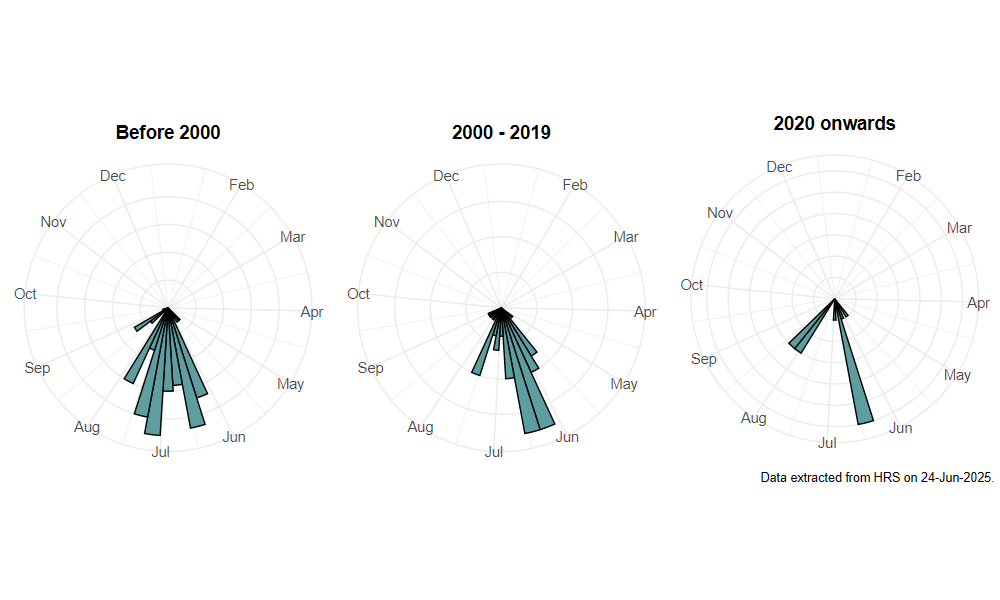Eumerus sabulonum (Fallén, 1817)
Identification
Identification difficulty = 3. ![]()
![]() according to Ball & Morris, 20241
according to Ball & Morris, 20241
Biology
The larva remains unknown but on the continent, larvae been reported feeding in small cavities in the bases of Sheep's Bit Jasione montana leaves (Munk, 2000)2. Adults have been found resting in the sun on bare ground and sandy banks, or flying low over short vegetation, when they resemble small solitary bees. Most localities are coastal, and range from steep grassland slopes with bare ground to sand dunes. Occasionally visits flowers.
Flight period
The following plots show the number of unique records per week excluding those reported to be of immature stages.

Status
Lower Risk (Nationally scarce) - Ball & Morris, 20143. Notable - Falk, 19914. Rare (RDB3) - Shirt, 19875.
Distribution
A coastal species whose range extends from Hampshire and Dorset westwards and northwards to Anglesey. There are also records from Wigtownshire and Ayrshire in south-west Scotland. Adults are difficult to locate or catch, so the species is probably under-recorded.

Trends
The following plots show the Frescalo TFactor vs year and a map of the rescaled frequency (all records) for the species.
-
Ball, S., & Morris, R. (2024). Hoverflies of Britain and Ireland. WILDGuides (3rd ed.). Oxford: Princeton University Press. ↩
-
Munk, T. (2000). Svirrefluen Eumerus sabulonum (Fallén, 1817) (Syrphidae, Diptera) yngler i blåmunke (Jasione montana). Flora og Fauna, 106, 19–22. ↩
-
Ball, S., & Morris, R. (2014). A review of the scarce and threatened flies of Great Britain. Part 6: Syrphidae. ( No. 9). Species status (pp. 1–130). Peterborough: JNCC. ↩
-
Falk, S. (1991). A review of the scarce and threatened flies of Great Britain. ( No. 39). Research and Survey in Nature Conservation (pp. 1–194). Peterborough: NCC. ↩
-
Shirt, D. (Ed.). (1987). Red Data Books: 2. Insects. Peterborough: NCC. ↩